How to distinguish fodder potatoes from table varieties and what are their features
Depending on the application, the content of starch, proteins, vitamins and other useful substances, potatoes are divided into table, universal, fodder and industrial. Today we’ll talk about the stern. What it is?
These are potatoes that are grown for pets. Feed varieties contain a large amount of protein, which has a beneficial effect on the body of animals and significantly increases their productivity.
What are fodder potatoes?
Forage potato varieties are grown for domestic large and small livestock. Such potatoes contain a lot of protein, starch and dry substances necessary for the growth and weight gain of animals. This is a good replacement and addition to your main diet.
Forage varieties are characterized by high yields, high nutrient content and rapid ripening.
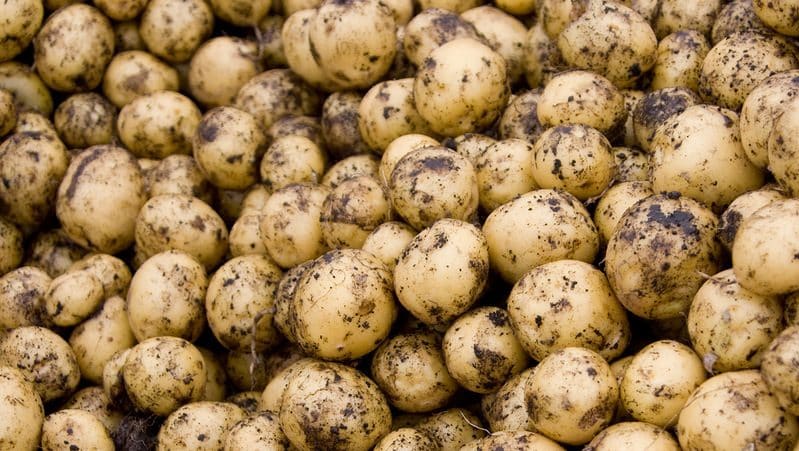
Characteristics of tubers, description of appearance
Fodder potatoes are usually 2-3 times larger than ordinary tubers. Unlike the smooth, regular oval-shaped table varieties, fodder potatoes have an irregular shape, with swellings and protrusions in various places, with deep eyes. Fodder potatoes taste bland and watery. It gets very soft when cooked.
How to distinguish fodder potatoes from table potatoes
It is not easy to distinguish fodder potatoes from table varieties. The main differences between varieties are size, appearance, taste, and chemical composition.
Table potatoes have medium or large tubers of regular oval shape. Their skin is thin and their eyes are small. Table potatoes contain a high content of vitamin C and a low starch content - up to 18%. Fodder potatoes have very large tubers with a high starch content - more than 18%.
The protein content of table potatoes does not exceed 2%, for fodder varieties – 2-3.65%. Vitamin C in table varieties is in the range of 20-22%, in fodder varieties it does not exceed 18%.
1 kg of fodder potatoes contains 16 g of digestible protein, the nutritional value of the feed is within 0.31 feed units.
Read also:
What is feed corn, how to distinguish it from food corn and where to use it.
Who needs fodder beets and why, how to grow them correctly and whether people can eat them.
Advantages and disadvantages of fodder potatoes
Advantages of forage varieties:
- contain the required amount of digestible protein;
- a lot of starch, which is well absorbed by all types of farm animals;
- In terms of nutritional composition, potatoes are superior to agricultural crops grown for livestock feed;
- have high yields.
The disadvantages of such potatoes are:
- the content of solanine alkaloid in tubers (especially green ones), tops, leaves, flowers, which gives milk a bitter taste;
- reduction in the amount of nutrients during long-term storage;
- increasing the acidity of potatoes during silage technology used for long-term storage.
What are fodder potatoes for?
Varieties of fodder potatoes were created specifically for use in animal husbandry as the main and additional nutrition for cattle, medium and small domestic animals.
Who can you feed it to?
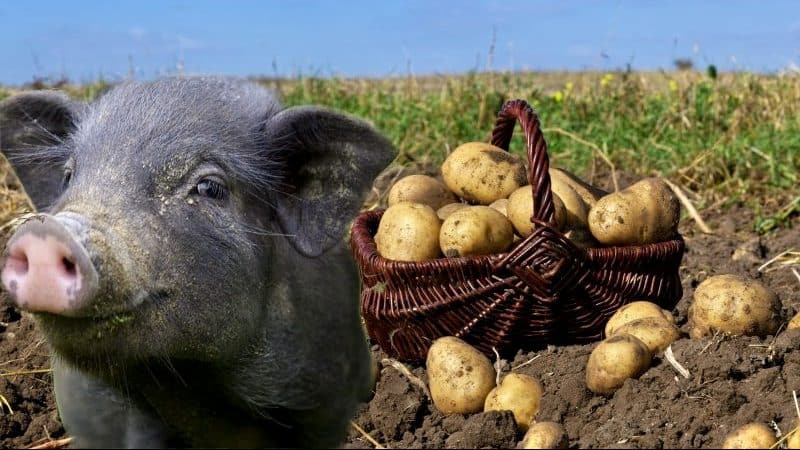
The culture is widely used in animal husbandry. Potatoes are 90-95% absorbed by pigs, which significantly increases their weight. For cows, horses, goats, and sheep, raw tubers are used as an addition to the main feed.
It is recommended to give boiled vegetables to rabbits, chickens, geese, and turkeys. Tops, peels, peelings, tubers mechanically damaged during harvesting, and substandard planting material are also used as feed.
Features of planting and growing fodder potatoes
For planting fodder potatoes, a sunny area on high-quality, fertile soil is allocated. It grows well in loose soil. Dense, poorly dug soil will slow down the growth of the bush and prevent large tubers from forming.
To prevent the invasion of insect pests and various diseases, the crop is planted after legumes and grains, zucchini, cabbage, and pumpkin.
Important! It is not recommended to plant potatoes in the same area for two years in a row.
Preparing for landing
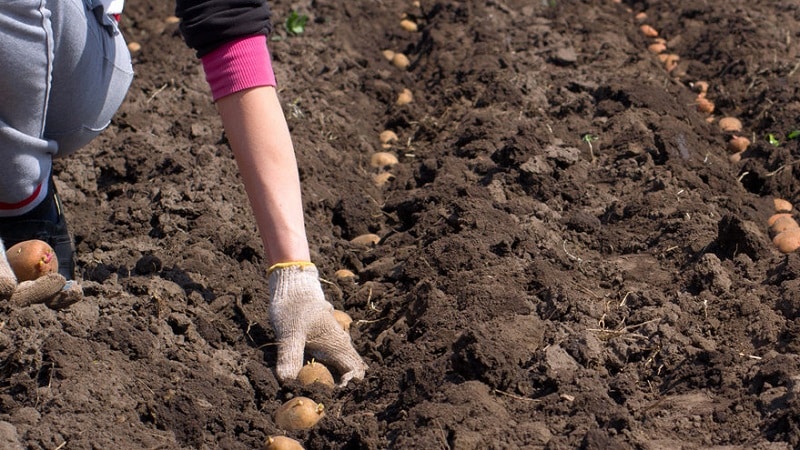
Potatoes begin to be prepared three weeks before planting in open ground. First, healthy medium-sized tubers without damage are selected.
Attention! Large potatoes are not allowed to be cut into pieces for planting.
Vegetables are laid out in a spacious container in 2-3 layers. The container is placed in a warm, bright room and left for 15-20 days for the tubers to germinate. After the sprouts appear, the planting material is re-sorted and tubers with several strong sprouts are selected. Tubers without sprouts are not used for planting.
To prevent invasion wireworm the seeds are treated with a pink solution of potassium permanganate. Immediately before planting, they are sprayed with a faint blue solution of copper sulfate or the drug “Fitosporin” to prevent fungal infections.
Soil requirements
Forage potato varieties are recommended to be planted on fertile, turf, chernozem, medium sand, light loamy soils with a slightly acidic or neutral environment.
Reference. The crop should not be planted in wetlands or soils with excess moisture. In such soils, the tubers will begin to rot.
In the fall, after harvesting, the area should be thoroughly cleared of plant debris and deeply dug with the addition of organic matter and mineral fertilizers.
In the spring, 3-4 weeks before planting, the area is fertilized with cow manure, spreading it in a small layer on the ground and covering it with a layer of soil. Before planting the tubers, the soil is dug deeply.
Dates, scheme and rules of planting
Planting of sprouted tubers is carried out in the middle - end of May, depending on the planting region. Prepared potatoes are planted only in soil heated to +9...+10°C at a depth of 12-15 cm.
Furrows are made on the site with a depth of 10-12 cm. A distance of 65-70 cm is left between the furrows. Planting holes are made at a distance of 30 cm from each other.
Reference. Before planting tubers, the planting holes are moistened.
When planting, first pour 200 g of rotted compost or 10 g of wood ash into each hole. Then the tubers are carefully laid so that the sprouts are not damaged. They are sprinkled with loose substrate on top.
For forage potato varieties with characteristically tall tops, it is recommended to use ridge technology for planting vegetables.While filling the furrows, ridges 15-17 cm high are formed. As the tops grow, soil is periodically poured onto the ridge until the embankment reaches 30 cm.
With ridge technology, potato seedlings appear 14-16 days earlier than with the usual planting method. Thanks to this method, the soil will always be loose, and a soil crust will not have time to form. The ridges help keep the tops in an upright position.
Nuances of care
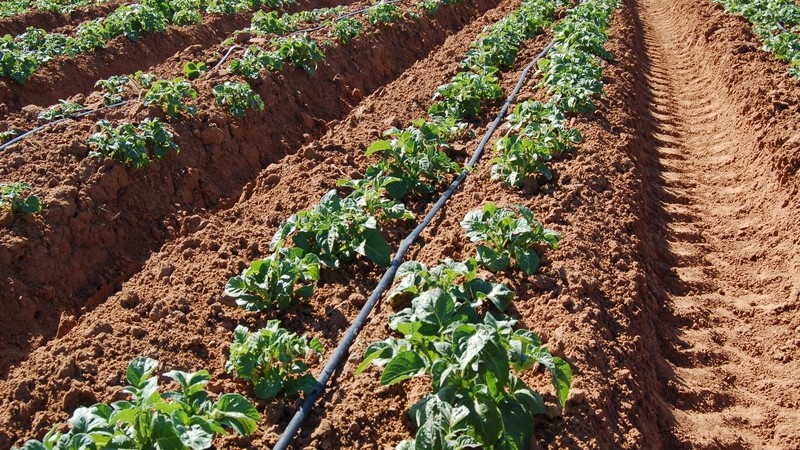
When planting forage varieties, it is important to consider the level of soil acidity. Increased acidity is normalized by digging up the soil with wood ash or dolomite flour.
Much attention is paid to soil aeration to enrich the root system with oxygen. This improves the development of the bush and the formation of tubers.
When planting, take into account the density of the soil. The denser and heavier the soil, the less the planting material is buried. In heavy soils, the depth of the hole should be 5-6 cm, in light sandy loam tubers are placed at a depth of 9-12 cm.
To prevent rapid drying out of the soil during the dry period and to eliminate the growth of weeds, cover the potato beds with a layer of mulch. For this purpose, sawdust, straw, and mown grass are used. Over time, the mulch turns into useful humus.
Watering mode
Forage varieties do not require frequent and abundant watering. During planting, the holes are moistened with a small amount of water. The next watering is carried out when the green mass of the bushes reaches a height of 12-15 cm. Watering is carried out every 7-9 days with warm water under each bush.
Water is poured in small portions so that the ridges do not erode. Sandy and sandy loam soils are watered more often than turf soils.During flowering of the crop, the sprinkling method is recommended to uniformly irrigate the bushes and prevent the ridges from being washed away by strong water pressure.
The flowering of potato bushes indicates the process of tuber formation. At this time, plantings require a larger volume of applied liquid - 9-10 liters of water are consumed for each bush.
Attention! After flowering ends, watering is stopped, since at this time the crop is susceptible to late blight.
Top dressing
During growth, potatoes take up a significant amount of nutrients from the soil. Therefore, the soil needs to be replenished with minerals. fertilizers.
When planting tubers, add 1 cup of compost or 10 g of wood ash to each hole.
When the green mass grows to 10-15 cm, use urea in an amount of 10-15 g per 10 liters of water. During flowering and tuber formation, phosphorus and potassium are added. Prepare the composition: 10 g of potassium nitrate and 25 g of superphosphate per 10 liters of water. It is useful to add 2-3 g of boric acid to the solution.
Attention! After flowering, nitrogen fertilizers are not used, as they lead to active growth of tops to the detriment of the formation of tubers.
It is recommended to alternate mineral fertilizers with organic matter.
Weeding and hilling
After each watering, hilling should be carried out. Hilling maintains the height of the ridges; it is useful for saturating the soil with oxygen. Hilling is carried out until harvest.
Throughout the growth period, the plantings are regularly weeded. Weeds take nutrients from the soil and inhibit the growth and development of potatoes.
Disease and pest control
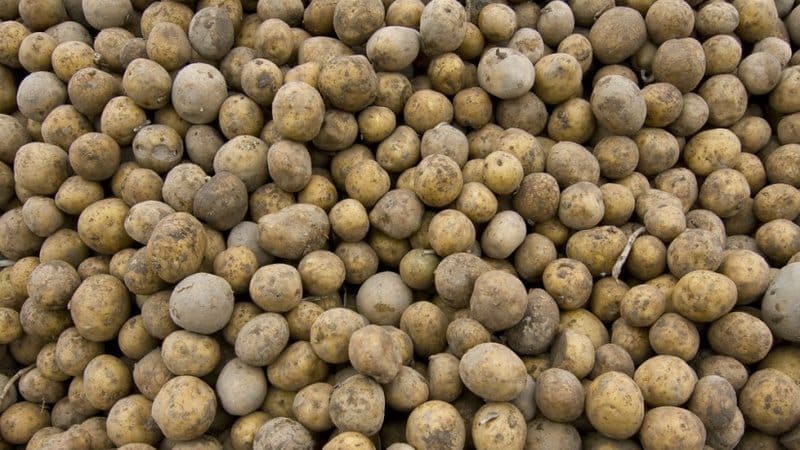
The most common potato disease is late blight. Dark brown spots appear on the tops, which gradually increase in size.This leads to wilting and drying of the leaves. The disease then spreads to tubers.
For prevention, tubers are treated with Fitosporin solution before planting. Also, for preventive purposes, when potato seedlings reach 20-25 cm, the plantings should be treated with copper sulfate, adding 1 g of the substance per 1 liter of water.
Fomoz - a fungal disease, which develops in the second half of summer. In the initial stage, dark blurry spots appear on the leaves, and spherical growths form on the stems. On tubers, the disease manifests itself during storage - dark spots with dry rot form.
They fight the disease only with preventive methods. Planting tubers are treated with the drug "Maxim".
The most common potato pest is Colorado beetle. It is difficult to combat; you have to apply insecticides three times during the season and collect the larvae by hand. The drugs “Komador”, “Iskra”, “Aktara” are effective in the fight against it.
Attention! Insecticides are no longer used when ovaries appear.
Folk remedies are also used: potato bushes are sprayed with infusions of tansy, celandine, and basil.
Cicadas feed on the juices of the tops. The green mass of the bush gradually dies off. Various viruses penetrate through damaged areas. To protect potato seedlings, the preparations “Cruiser” and “Tabu” are used - they are used to treat the soil before planting potatoes. When pests multiply, the drug “Karate Zeon” is scattered around the bushes.
Difficulties in growing
When growing fodder potatoes in heavy clay soil, the development and formation of root crops is difficult due to the very high density of the substrate and its insufficient aeration. Peat and sand are added to such soil when digging.
You should be careful about watering. When the soil is over-moistened, rot forms on the tubers. Potatoes grown when the beds are oversaturated with moisture rot during long-term storage.
Advice from experienced farmers
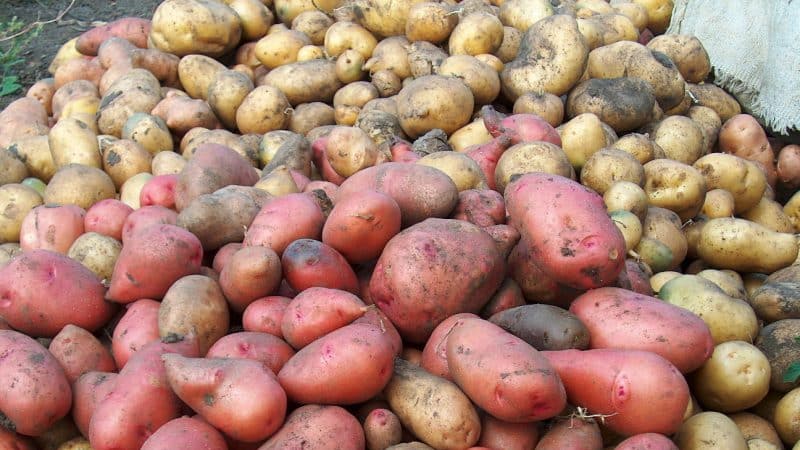
Experienced farmers advise leaving wide row spacing - more than 65 cm. This is necessary so that there is enough land for hilling.
Farmers note that the greater the distance between the bushes, the larger the tubers are formed, since with an increase in the area for growth they receive more nutrients from the soil.
It is also recommended not to wait for the tops to completely dry out before harvesting. Fresh green tops serve as good food for animals. When the tops turn yellow, their nutritional value is reduced.
Conclusion
Any high-yielding potato variety that remains in surplus or is rejected as substandard is used to feed livestock. But fodder potato varieties with a high content of proteins, starch, and dry matter are best suited for animals.
Fodder potatoes are well digestible by pets and serve as an excellent addition to the main food.
Any variety of potato can be used as a fodder; no one has specifically bred a fodder variety.